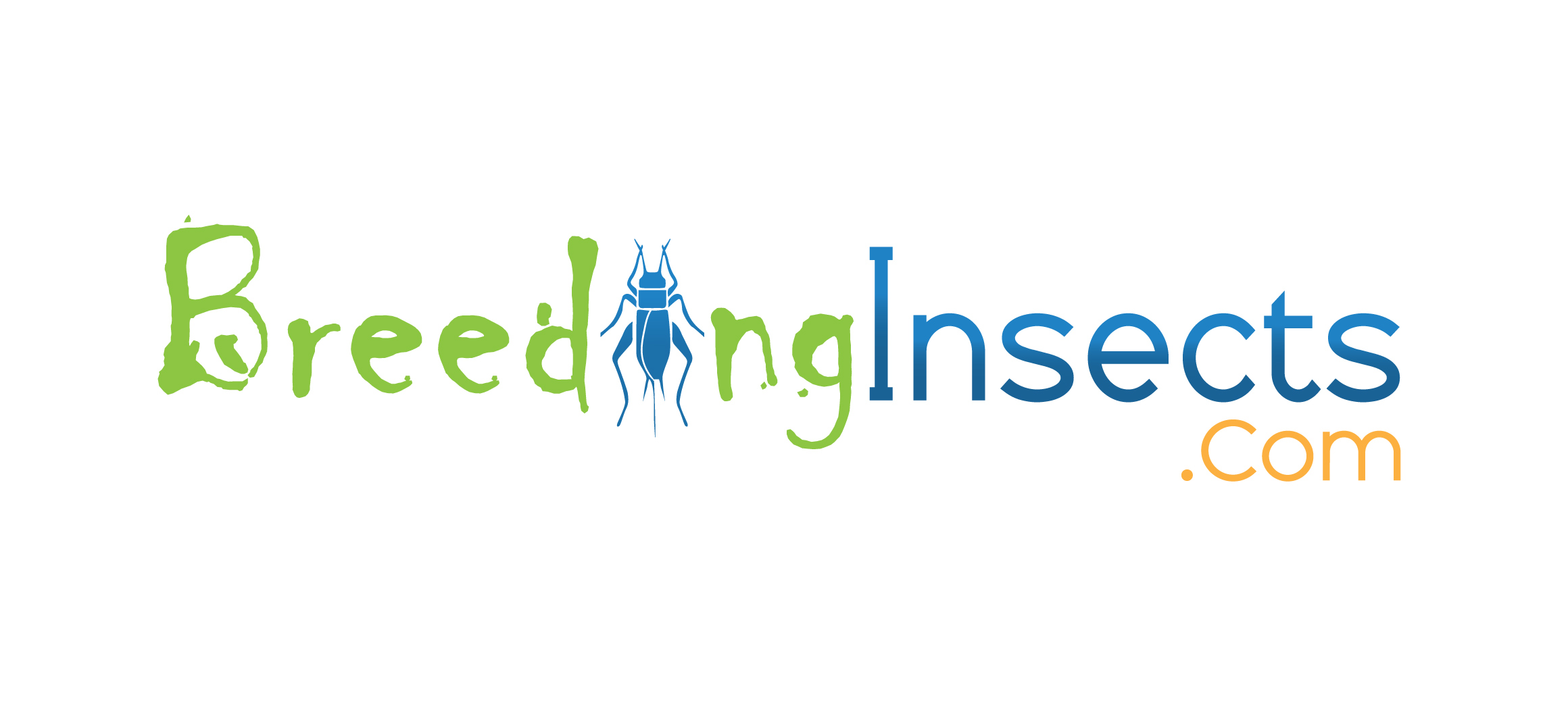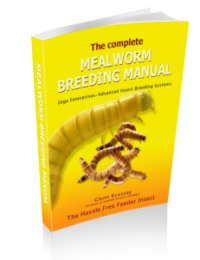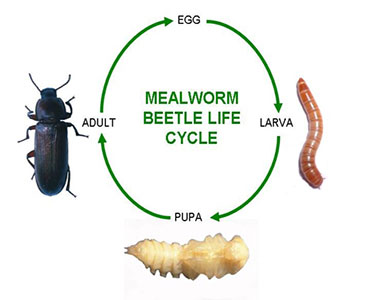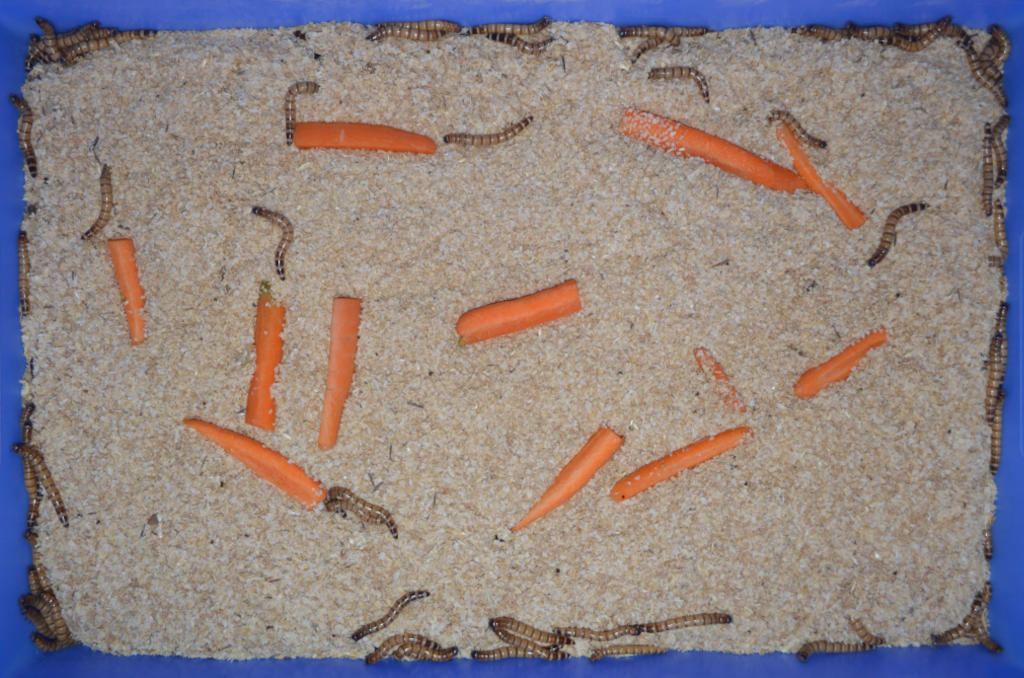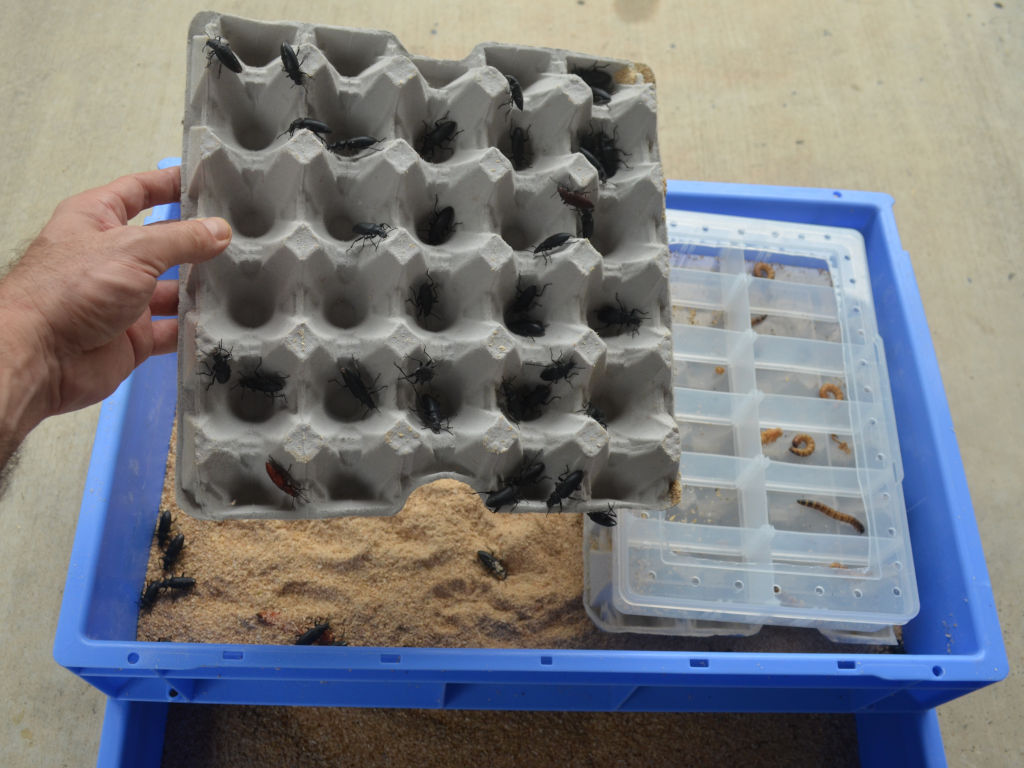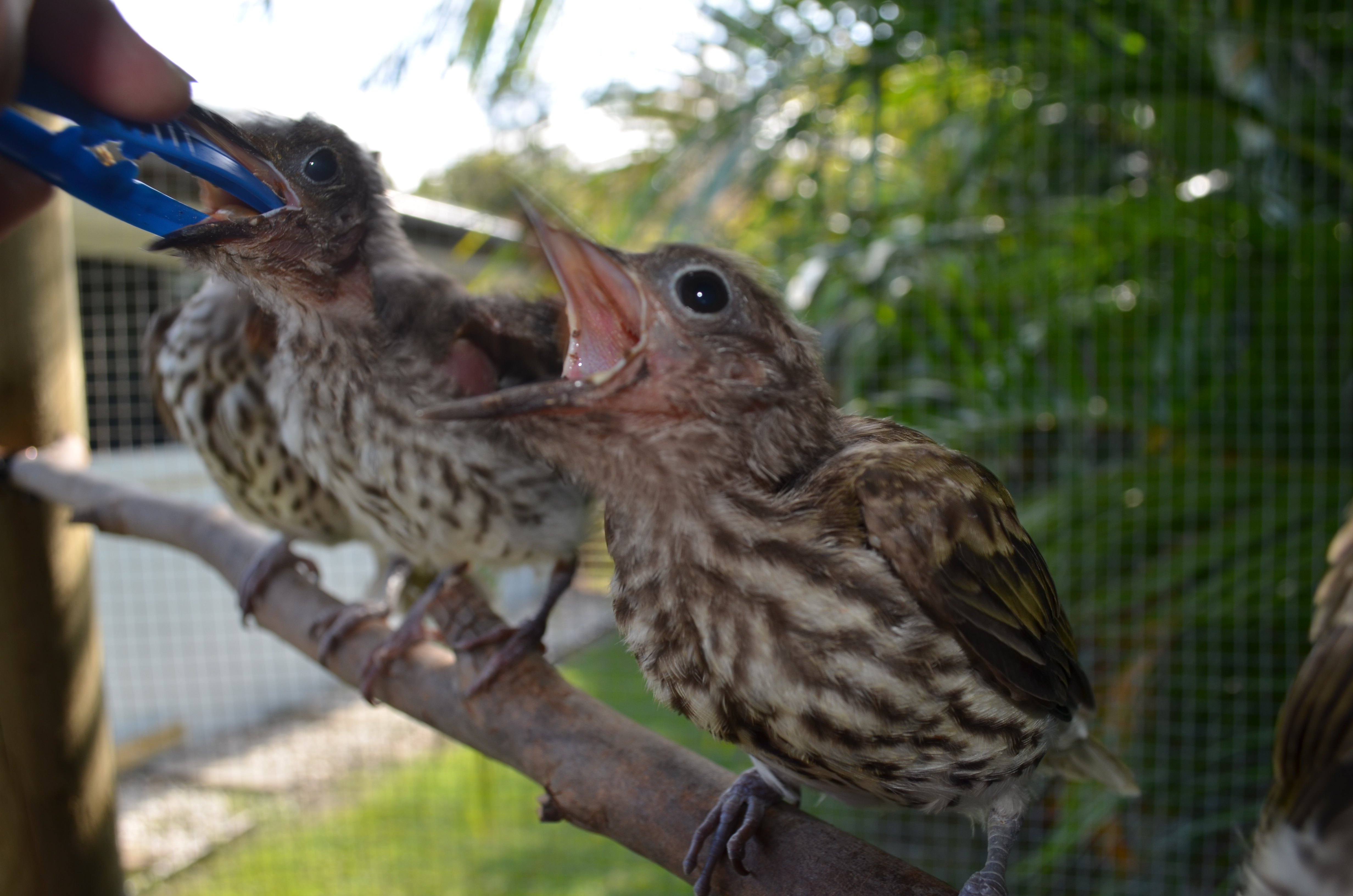Superworms are not a worm, but the larvae stage (immature stage between egg and pupae) of the Zophobas Beetle, a type of Darkling beetle. Darkling Beetles is the common name for Beetles that below to a large group belonging to the Tenebrionidae family). Yellow mealworm beetles are also Darkling Beetles. They are also known as super or giant mealworms, (we refer to them in this section as Giant mealworms).
The giant mealworm (Zophobas morio) is a large tropical species of mealworm that is popular as feed for larger animals such as fish, reptiles and wildlife rescue. They are much larger than the yellow mealworm growing to approximately 2 1/4 inches long (55 mm). They originated from Tropical Central and South America and require temperatures greater than 12 degrees C to survive and breed effectively. They should never be placed in the fridge which will kill them, which is a common practice for yellow mealworms.
Lifecycle
The lifecycle of the giant mealworm comprises of the following 4 distinct stages.
-
- Egg
- Larvae (worm)
- Pupae
- Beetle
They can be separated for breeding when they are 2 inches (5cm) long.
Reproduction
- Lifecycle- Reproduction is sexual, with one male being able to transfer enough sperm to fertilize all future eggs. Females giant mealworms can lay up to 400-500 eggs over their life.
- Females can be distinguished from the males as they are larger than the male.
Other
Poke holes in breeding container- need to be covered unless climate control.
Divided storage boxes and 35 mm film containers work well for holding pupating superworms. Be sure to poke air holes in the container. Place a small amount of meal in each cell with the pupating super worms.
Place the container holding pupating super worms in a warm, dark place. Check the container weekly and remove any deceased super worms.
• Once the larvae have pupated, you can place them into the beetle habitat.
Provide carrots as a source of food and water for both the super worm larvae and beetles. One large carrot, cut up, will feed several hundred larvae or beetles for about 3 days (twice per week minimum)
Growth rate is approximately the same as the yellow mealworm for the same size. For instance it takes approximately 10 weeks (3-4 months) for a giant mealworm to go from egg to 1 inch (2.5cm) long which is the same as an large yellow mealworm (at 25-28 degrees). Where it differs is that is the worm stage grows twice as large and takes an additional ? weeks. This is The beetle stage will go for another 8-12 weeks (2-3 months).
At cooler temperatures the duration can increase significantly. Click Here for more details:
Food and Water
In the wild giant mealworms are omnivorous eating a wide range of foods including, grains, organic material such as plants, grains, some seedlings and decomposing animal material. They live in leaf litter, compost or areas with good cover. They are found in close association with bird droppings or left over foods.
In captivity they eat grain based substrates such as wheat (bran, mill run, pollard) or oats. They can be fed pellets for chicken or other omnivore food. They do not drink free water, and get their moisture from wet foods such as vegetables and fruits. The larvae can go without wet foods for long periods and sustain themselves by obtaining moisture from humid air.
Natural Habitat- Distribution
Giant mealworms are native to tropical areas of Central and South America. In these climates they can be found eating decaying or live vegetation matter (leaves/bark/fruits, grains) on the ground in areas with good cover. They can also optimistically eat decaying animal matter. Once they are ready to pupate they will disperse away from a colony (if one exists) and go into the ground to avoid being eaten by predators and their own kind. Once they emerge as a beetle they will eat similar materials. This enables them to eat a wide range of foods in captivity including; grains, flour, pellets, fruits/vegetables pet foods and other agricultural products
Anatomy
Beetle shares the same characteristics of most insects having: head, thorax, antennae, wing shields and six legs.
Larvae (worms) have six pairs of legs near the head of the worm which are difficult to distinguish. The worms have numerous instars (shed between growth spurts) and white/light yellow after they molt.
Classification
Kingdom Animalia (animals), Phylum Arthropoda (arthropods), Class Insecta (insects), Order Coleoptera (beetles), Family Tenebrionidae, Genus Tenebrio, Species Zophobas morio.
Giant Mealworms are in the Family Tenebrionidae which is a large groups of approximately 19 600 species, commonly referred to as Darkling beetles.
FAQ
Do Giant mealworms need light.
No both yellow and giant mealworms do not required light and are photonegative (move away from light when exposed).
If they have sufficient cover (ie under cartons or bark and leaves in the wild) they can be active in the day.


